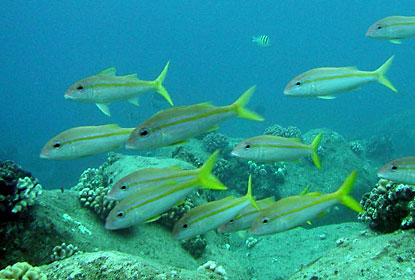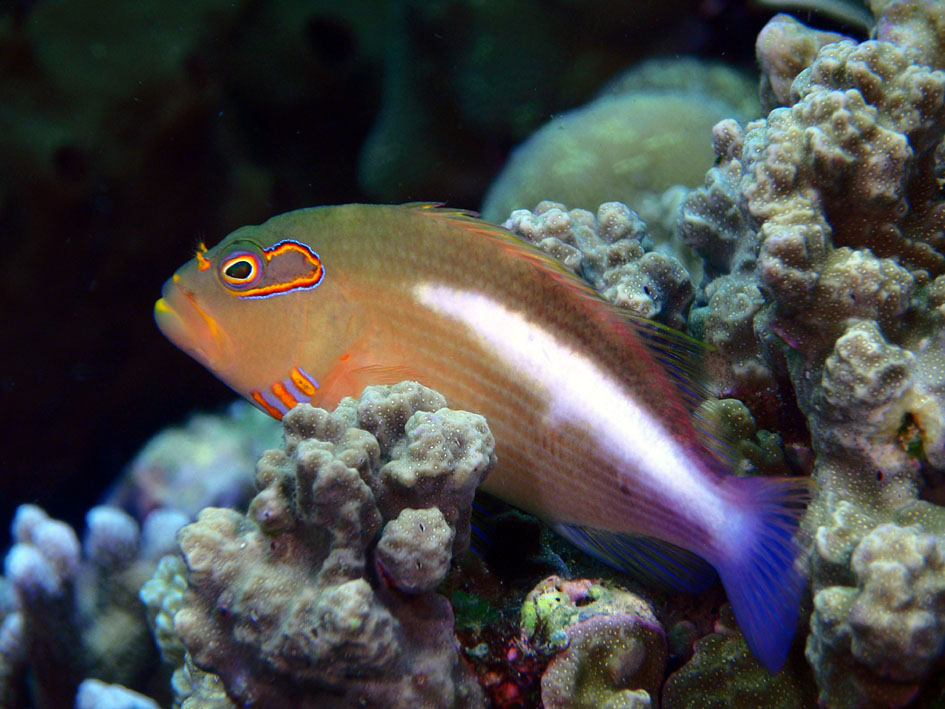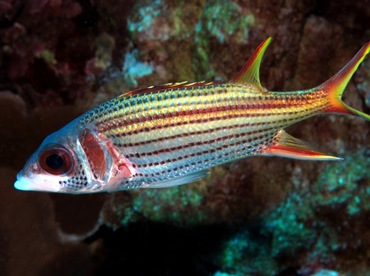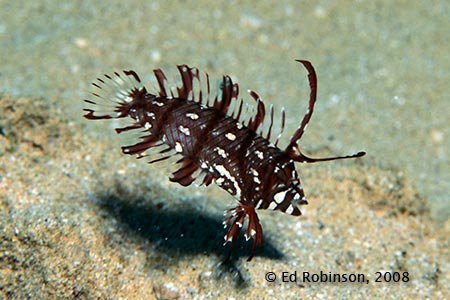We saw these at Two Step. We were not that close to them, but could see them spinning in the distance.
Photos (not mine) and descriptions (not mine) of fishes and marine animals seen while snorkeling
Saturday, December 28, 2013
Ulae--Capricorn Lizardfish
Lizardfish ambush their predators as they patiently wait for prey to come within striking distance. We saw this one perched deep down atop coral at Two Step.
Blue Line Wrasse
I saw this guy snorkeling. There are so many wrasses! I am sure we are missing some, but the more we snorkel, the more we see.
Thursday, December 19, 2013
U'u--Shoulderbar or Pearly Soldierfish
We saw many of these at Two Step. They are easy to spot because of red color and big eyes.
Dark bar at gill opening. Body color may vary from pinkish-silver to orange-red. Tips of dorsal and anal fin and tail are usually of a more pronounced red edged with white.
Humuhumu lei--Lei or Whiteline Trigger Fish
Saw a pair of these at Two Steps.
White stripe from mouth to base of anal fin. Double bar from pectoral fin over eye to base of pectoral fin. Body grey. A territorial fish that often attempts to charge divers.
Kapuhili--Oval or Redfin Butterflyfish
Rich and I saw a pair of these at Two Steps.
Vertical black eye bar, bluish stripes on body, distinctive red anal fin.
An uncommon species that almost exclusively occurs in pairs.
Vertical black eye bar, bluish stripes on body, distinctive red anal fin.
An uncommon species that almost exclusively occurs in pairs.
Kikakapu--Pebbled or Multiband Butterflyfish
There were many of these at Two Steps.
Black eye-bar, small black band at base of tail and edge of tail and five beige verical bands on its cream colored body. These bands can appear at times only faintly.
Black eye-bar, small black band at base of tail and edge of tail and five beige verical bands on its cream colored body. These bands can appear at times only faintly.
Wednesday, December 18, 2013
Puhi--Dwarf Golden Moray
Sarah found this little moray at Two Steps today and showed it to me. Quite cute, but before we went snorkling, we went to a dive shop and while talking to one of the sales ladies, she showed us a bandaged finger. She was scuba diving and a moray eel attacked her finger. She had to have 33 stitches and says she has no feeling in her finger.
Small size, mustard colored head, sometimes dark markings on the body, and iridescent blue iris. Usually no longer than 10 inches. A shy, but common species that is seldom seen in the open.
Small size, mustard colored head, sometimes dark markings on the body, and iridescent blue iris. Usually no longer than 10 inches. A shy, but common species that is seldom seen in the open.
Monday, December 16, 2013
Big Eye Jack or Trevally
Rich saw these right at the rocks where the waves were crashing. It was a big school of hundreds.
I tried to get close to see them but was pounded by the waves. By the time I got there, they were gone.
From Wiki" It is predominantly an inshore fish, inhabiting reefs down to depths of around 100 m in both coastal zones and offshore islands, often venturing into estuaries and sandy bays as juveniles. The bigeye trevally is commonly found in large slow moving schools during the day, becoming active at night when it feeds, taking a variety of fish, crustaceans, cephalopods and other invertebrates. The fish is known to move from a more crustacean dominated diet as a juvenile to a nearly completely fish dominated diet as an adult.
The bigeye trevally is of moderate importance to fisheries throughout its range, and being of high importance to some artisanal fisheries. It is taken by gill net, hook and line and other artisanal fishing methods. It is rated as a fair to good table fish.
The bigeye trevally is a schooling species, known to form aggregations consisting of more than 1500 fish. The species is often seen in these large schools either stationary or slowly moving around the reef complexes they inhabit during the day. At night, these schools dissolve, and the species become active, taking most of its prey during the nocturnal period.This contrasts to most jacks, which are generally diurnal hunters, although the species has been documented hunting in shallower waters during the day, especially as juveniles.
I tried to get close to see them but was pounded by the waves. By the time I got there, they were gone.
From Wiki" It is predominantly an inshore fish, inhabiting reefs down to depths of around 100 m in both coastal zones and offshore islands, often venturing into estuaries and sandy bays as juveniles. The bigeye trevally is commonly found in large slow moving schools during the day, becoming active at night when it feeds, taking a variety of fish, crustaceans, cephalopods and other invertebrates. The fish is known to move from a more crustacean dominated diet as a juvenile to a nearly completely fish dominated diet as an adult.
The bigeye trevally is of moderate importance to fisheries throughout its range, and being of high importance to some artisanal fisheries. It is taken by gill net, hook and line and other artisanal fishing methods. It is rated as a fair to good table fish.
The bigeye trevally is a schooling species, known to form aggregations consisting of more than 1500 fish. The species is often seen in these large schools either stationary or slowly moving around the reef complexes they inhabit during the day. At night, these schools dissolve, and the species become active, taking most of its prey during the nocturnal period.This contrasts to most jacks, which are generally diurnal hunters, although the species has been documented hunting in shallower waters during the day, especially as juveniles.
Ulua la'uli--Black Jack or Trevally
Rich and I see these occasionally at Kahalu'u. They are usually solitary.
Jacks of the genus Caranx, often called trevallies, have prominent scutes—a line of strengthened scales that reinforce the tail. The scutes of the Black Trevally, or Black Jack, are especially easy to see. These jacks vary from almost black to dull gray, but the scutes are always dark. There is a dark spot on the upper gill cover. The species occurs singly or in pairs, typically along steep dropoffs adjacent to deep water.
Jacks of the genus Caranx, often called trevallies, have prominent scutes—a line of strengthened scales that reinforce the tail. The scutes of the Black Trevally, or Black Jack, are especially easy to see. These jacks vary from almost black to dull gray, but the scutes are always dark. There is a dark spot on the upper gill cover. The species occurs singly or in pairs, typically along steep dropoffs adjacent to deep water.
Ula--Hawaiian Spiney Lobster
How exciting to see a spiney lobste!. Rich pointed him out to me. He was large and crouched down between two rocks. All we could see was antennae and legs.
NPS photo - Bryan Harry
NPS photo - Bryan Harry
From the Waikïkï Aquarium:
Hawaiian spiny lobsters are important predators and scavengers in the reef community.
They are usually found under ledges or in caves with only their long antennae sticking out. These
large crustaceans use sound to warn other lobsters, and even human divers, away from their shelter
on the reef. The lobsters produce a grating or buzzing noise by rubbing hard pads at the base of the
antennae against special ridges on their head - an activity called stridulation. Lobsters remain in
their shelters during the day and emerge at night to forage over the reef.Sunday, December 15, 2013
Po'opa'a--Stocky Hawkfish
Rich saw this fish yesterday. He is the best at spotting fish! Usually finding them and showing me.
He is the largest hawkfish. Average size is 9-11 inches. He has a mottled body with yellow lines on face and red spots on body.
Friday, December 13, 2013
Nohu'omakaha--Devil Scorpionfish
Rich found this little creature and showed it to me last year: A humpback-like upper body, an ugly face that resemble a scallop. Brilliant color pattern of orange, yellow and black on the inside of pectoral fins.
When molested, he will flash the colorful inside of his pectoral fins as a warning. Dorsal spines are venomous.
Hilu piliko'a--Blacksided or Freckled Hawkfish
A common hawkfish here at Kahalu'u. Usually seen perched on lobe coral head.
Will let you get very close before he swims off to another coral head to perch on.
Light to dark brown head and front of body covered with red freckles. Broad black strip on side of body.
Nunu peke--Cornetfish
Elongated silver body, whip-like tail. Fun to see. Doesn't seem to be afraid of snorklers.
An ambush hunter which stalks it's prey. Quite approachable and curious.
Here he is with honu.
An ambush hunter which stalks it's prey. Quite approachable and curious.
Here he is with honu.
Weke'ula--Yellowfin Goatfish
We saw these in a small school in the coral in front of old Outrigger.
A nocturnal feeder that rest during the day and easily approached.
A nocturnal feeder that rest during the day and easily approached.
Tuesday, December 10, 2013
O'opu hu--Stripebelly Puffer
This beautiful fish is large--14-18 inches. The largest puffer I have seen. He is not too shy and lets you get a closer look.
Puffers are slow swimming fishes that have the unique ability to draw water into a specialized chamber to inflate their bodies. This inflation is their primary defense against predators. If threatened, they will often swim into a hole and inflate themselves making it impossible to get them out.
These photos were taken at Kahalu'u by Doug Sell and probably of the same puffer we see.
The puffer is a culinary delicacy in Japan,, but must be prepared properly or it can be deadly.
Puffers are slow swimming fishes that have the unique ability to draw water into a specialized chamber to inflate their bodies. This inflation is their primary defense against predators. If threatened, they will often swim into a hole and inflate themselves making it impossible to get them out.
These photos were taken at Kahalu'u by Doug Sell and probably of the same puffer we see.
The puffer is a culinary delicacy in Japan,, but must be prepared properly or it can be deadly.
Piliko'a--Arc Eye Hawkfish
With eyes that work independently, hawkfish are very good ambush hunters. As bottom dwellers that lack a swim bladder, they prey on small fish and invertebrates. Most species maintain a small territory within which they select 3-4 prime locations to perch and survey the area. The male is very territorial and maintains a harem of females.
Rich has seen these in the past, but today is the first time I got a good look at one. A tri-colored u shaped arc next to the eyes. Sometimes a broad white stripe is visible on the side of the body.
Monday, December 9, 2013
Maneoneo--Sailfish Tang
There is a couple of Kahalu'u. We usually see them every time we go to Kahalu'u.
This fish is identified by its dark stripes and large, elongated fins.
Young fish are yellowish and already sport to characteristic stripes.
This fish is identified by its dark stripes and large, elongated fins.
Young fish are yellowish and already sport to characteristic stripes.
Kikakapu--Teardrop Butterflyfish
Finally saw one a couple of days ago. I have been looking every time we have come here.
The teardrop butterflyfish is a hard and soft coral grazer, using its large, protruding jaws to bite of polys as wll as pierces of the hard coral's skeleton or chunks of soft coral.. He also ingests larger crustaceans, algae, small clams, and sponges.
Usually found in pairs. Juveniles are usually solitary.
The teardrop butterflyfish is a hard and soft coral grazer, using its large, protruding jaws to bite of polys as wll as pierces of the hard coral's skeleton or chunks of soft coral.. He also ingests larger crustaceans, algae, small clams, and sponges.
Usually found in pairs. Juveniles are usually solitary.
Blue Striped Snapper
Rich and I see a few of these introduced snappers while snorkeling
In the 1950's collections of snappers and groupers were introduced to Hawaii's. Only three survived, dominated by the bluestriped snapper.
Since 2008 Hawaii conducts spearfishing contests that target the bluestripes along with the blue spotted groupers and black tail snapper with the intent of removing these fish from Hawaiian waters.
Since 2008 Hawaii conducts spearfishing contests that target the bluestripes along with the blue spotted groupers and black tail snapper with the intent of removing these fish from Hawaiian waters.
Ri
Ala'ihi--Spotfin Squirrelfish
Saw this little guy sneaking in and out underneath the coral watching us.
Squirrelfish are nocturnal hunters feeding near the bottom on small fish and swimming crustaceans. During the day they often congregate close to reefs and in caves.
Their color can change greatly in different lights and if threatened.
Some species have venomous spines.
Squirrelfish are nocturnal hunters feeding near the bottom on small fish and swimming crustaceans. During the day they often congregate close to reefs and in caves.
Their color can change greatly in different lights and if threatened.
Some species have venomous spines.
Friday, December 6, 2013
Dragon Wrasse
Back at Kalahu'u. We found if you snorkel on high tide and go the the south there is a beautiful area of a garden of corals, clear water and fish. Went this morning. It was our most enjoyable swim and also Rich's birthday.
The Dragon Wrasse is a juvenile of the Rockmover Wrasse, an interesting fish already in Snaps. The Dragon Wrasse is fun to find. It looks like a piece of floating seaweed.
The Dragon Wrasse is a juvenile of the Rockmover Wrasse, an interesting fish already in Snaps. The Dragon Wrasse is fun to find. It looks like a piece of floating seaweed.
Subscribe to:
Posts (Atom)



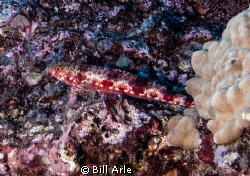


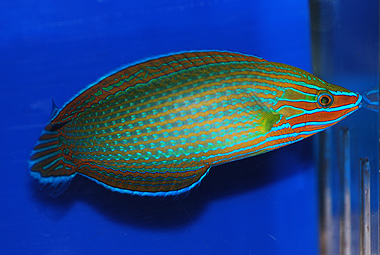




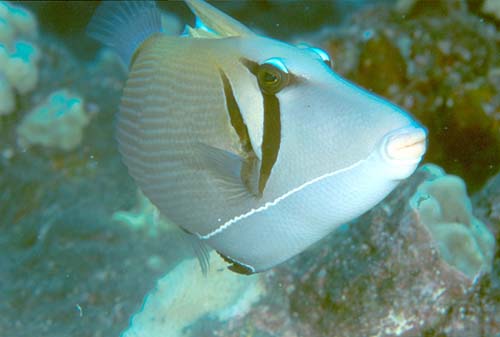

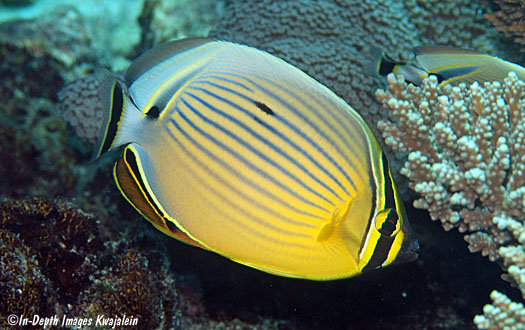






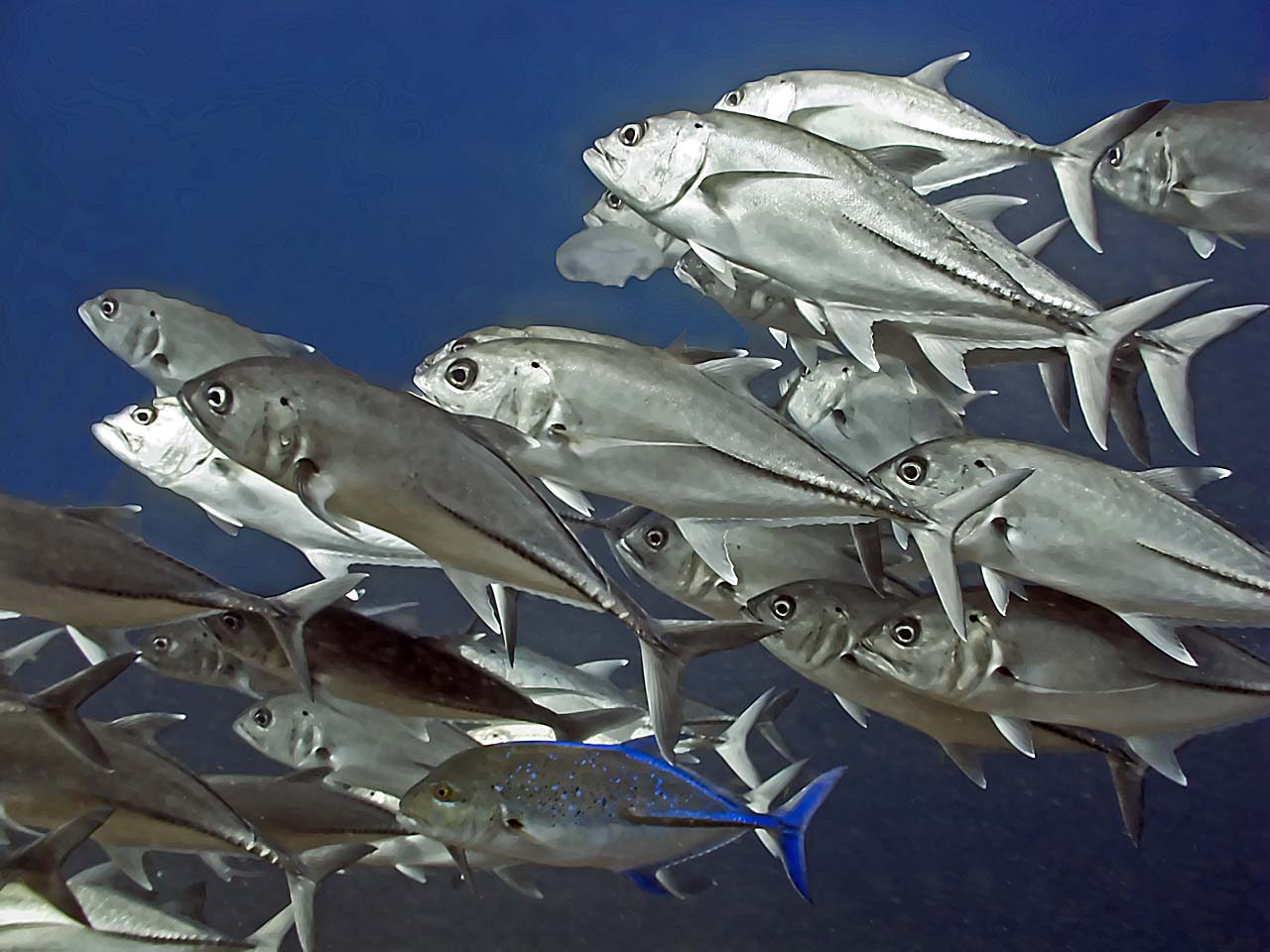
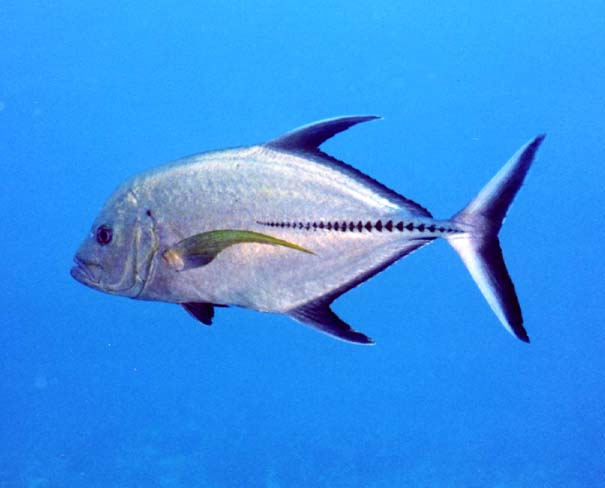
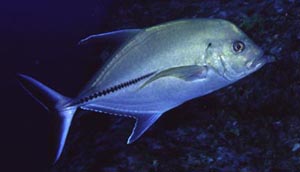







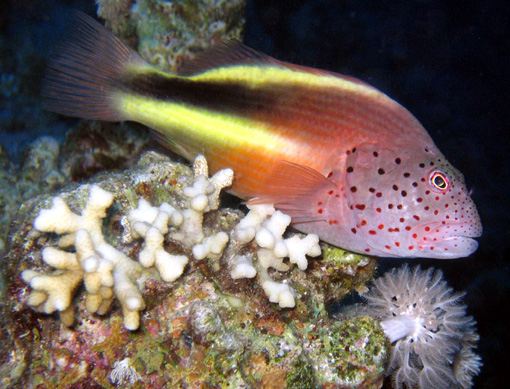

.jpg&w=700&h=500&zc=0)
